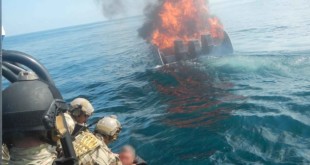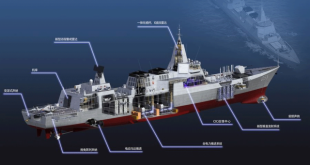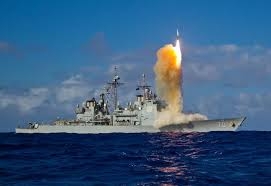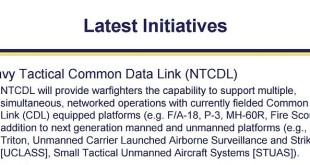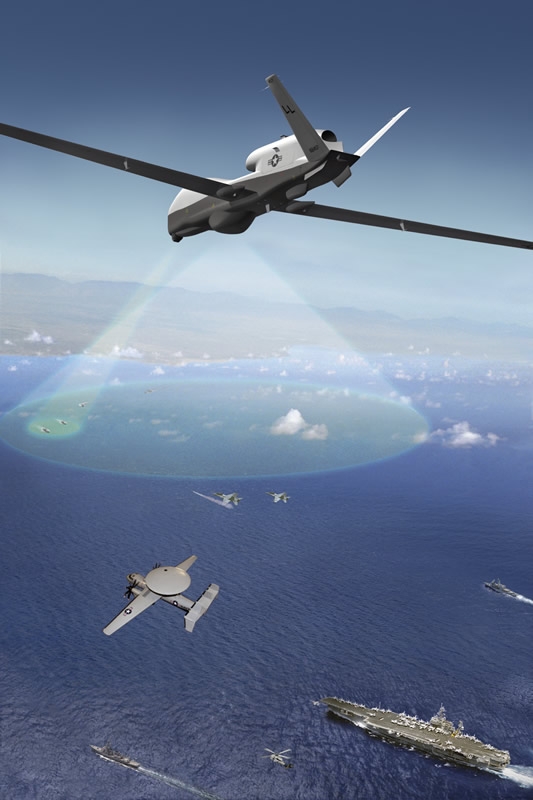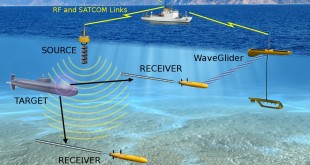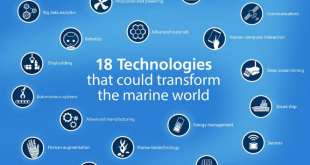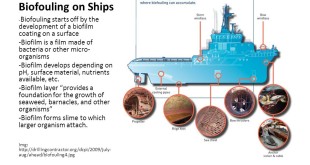One of the threat of maritime security is human and drug smuggling across maritime borders. This is particularly important because terrorists may use similar pathways to sneak illegal weapons through the border or to deliver a dirty bomb to seaports. There has been a noticeable growth in maritime criminal …
Read More »Nanotechnology has potential to revolutionize maritime and naval warfare environment
Nanotechnology deals with the understanding, control and manufacture of matter in the nanoscale regime, usually between 1 nm to 100 nm, and exploiting them for a useful application. At this length scale unique properties and phenomena arise as a result of increased surface-to-volume ratio and dominance of quantum mechanical effects. …
Read More »Navies developing next generation multi-role guided missile destroyers with large firepower and cutting edge sensors
A guided-missile destroyer is a destroyer designed to launch guided missiles. Many are also equipped to carry out anti-submarine, anti-air, and anti-surface operations. Defencyclopedia defines a destroyer as “A modern destroyer is a 6000-12,000-ton warship, equipped with an array of long-range missiles, guns, and high power radars, and is designed …
Read More »US Navy’s Aegis 9 emerging as a centerpiece of regional missile defense cooperation to defeat China threat in South China Sea
Beijing claims more than 80 percent of the South China Sea, which carries around $3.4 trillion worth of global trade each year. Five other countries — including the Philippines and Vietnam — also have claims in the waters, which have led to clashes over fishing rights and energy exploration. “China’s plans …
Read More »US Navy’s electromagnetic catapult (EMAL) finishes Load testing on Ford Aircraft carrier, China also claims breakthrough
The Electromagnetic Aircraft Launch System (EMALS) is a type of aircraft launching system currently under development by General Atomics for the United States Navy. EMALS uses electrical energy to propel Aircraft by converting electric energy into kinetic energy. The system launches carrier-based aircraft by means of a catapult employing a …
Read More »US Navy’s NTCDL Network for sharing real-time Intelligence, Surveillance, and Reconnaissance (ISR) data from surface, air, sub-surface, and man-portable systems
US Navy’s Network Tactical Common Data Link (NTCDL) Program provides the ability to transmit/receive real-time Intelligence, Surveillance, and Reconnaissance (ISR) data simultaneously from multiple sources (surface, air, sub-surface, man-portable), and exchange command and control information (voice, data, imagery, and Full Motion Video (FMV)) across dissimilar Joint, Service, Coalition, and civil …
Read More »US Navy’s High altitude, Long endurance (HALE) UAV TRINTON to provide persistent ISR and Signal Intelligence capability in Pacific Theater
The U.S. Navy Northrop Grumman MQ-4C Triton long-range maritime patrol unmanned aerial vehicle (UAV) became operational in 2018, yet the unmanned aircraft continue to evolve with upgrades and add capabilities that include signals intelligence (SIGINT) and sense-and-avoid radar. The MQ-4C Triton Unmanned Aircraft System (UAS), is a high altitude, …
Read More »DARPA’s TEAC program developed phased-array sonar technology for Unmanned Underwater Vehicles (UUW or UUV) to establish a network of distributed sonars for Anti Submarine Warfare
Sonars are one of the primary systems for detection and tracking of submarines in Anti Submarine warfare. However modern nuclear and diesel electric submarines have become very stealthy and quiet. Another challenge is diesel-electric submarines operating in littoral waters which generate high false alarm rates (FAR). One of the ways …
Read More »Global Maritime Security Risks and Global Marine Technology Trends 2030
Recent years have seen multiple new security challenges emerge in the maritime arena. Navies, coast guards and other maritime security agencies face a proliferation of security challenges. These include: illegal fishing of territorial waters; incursion of mineral exploitation across legal boundaries; maritime terrorism; narcotics smuggling; pollution as a result of …
Read More »New technologies to prevent Biofouling that costs shipping industries billions of dollars a year
Biofouling is one of the main problems faced by every type of ship at the sea. Marine growth such as barnacles and mussels have been the reason for problems such as decreased ship efficiency, corrosion etc. Biofouling not only sticks to the external surface of the ships but also gets into …
Read More » International Defense Security & Technology Your trusted Source for News, Research and Analysis
International Defense Security & Technology Your trusted Source for News, Research and Analysis
